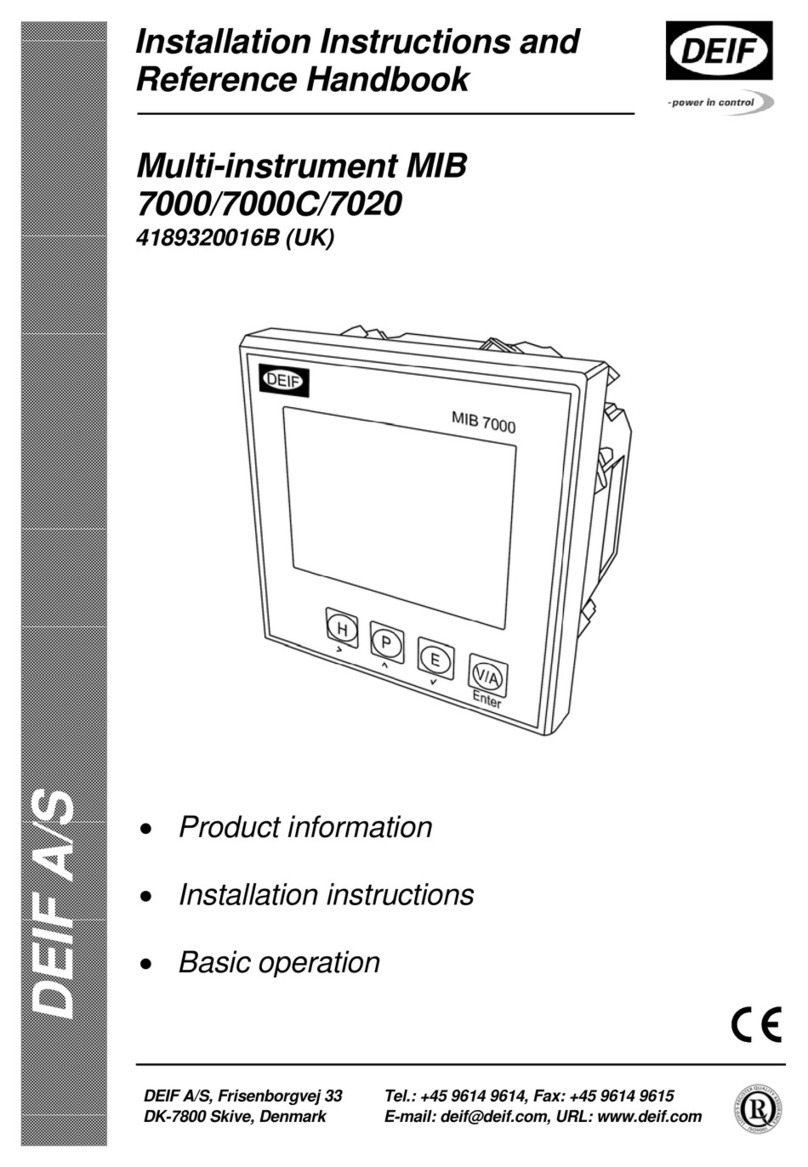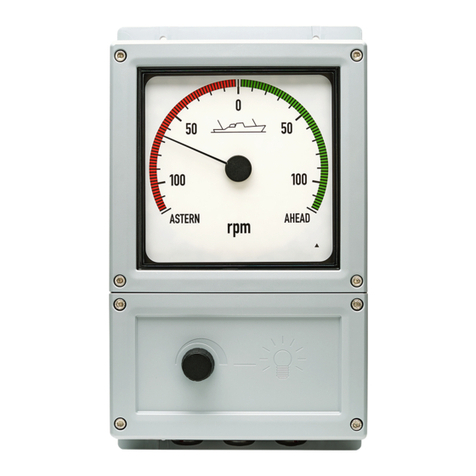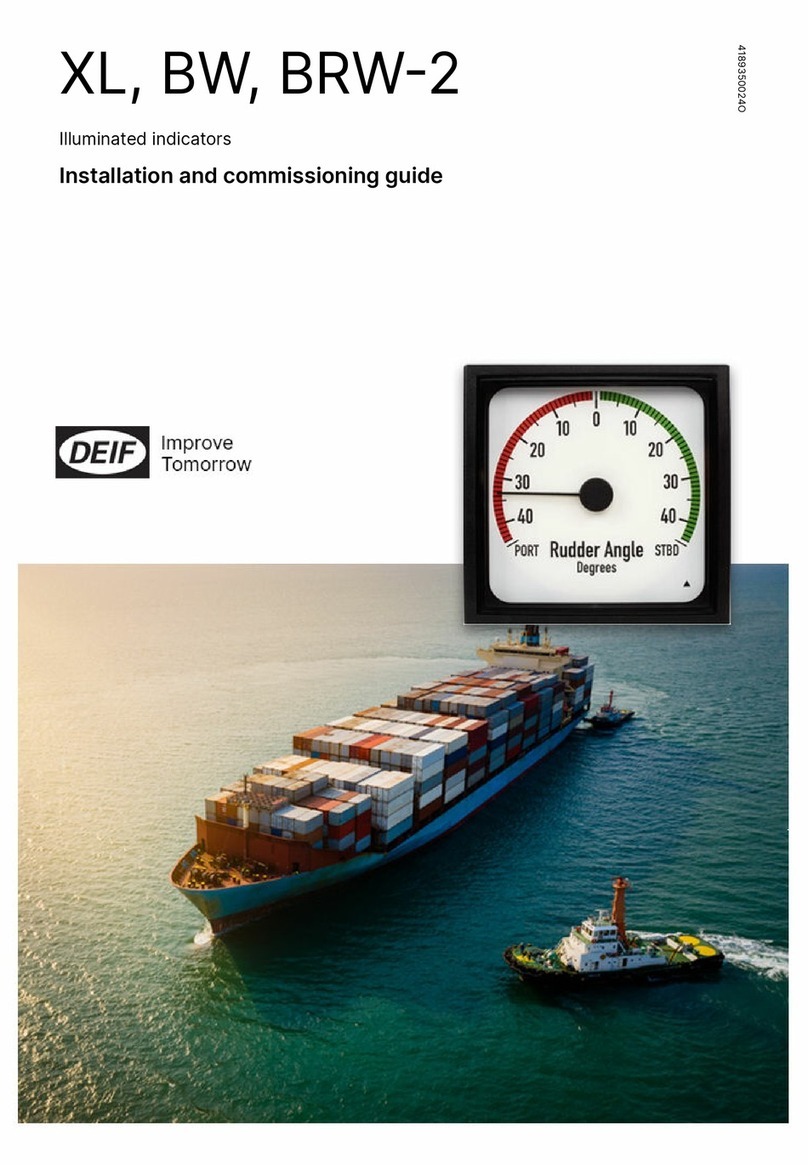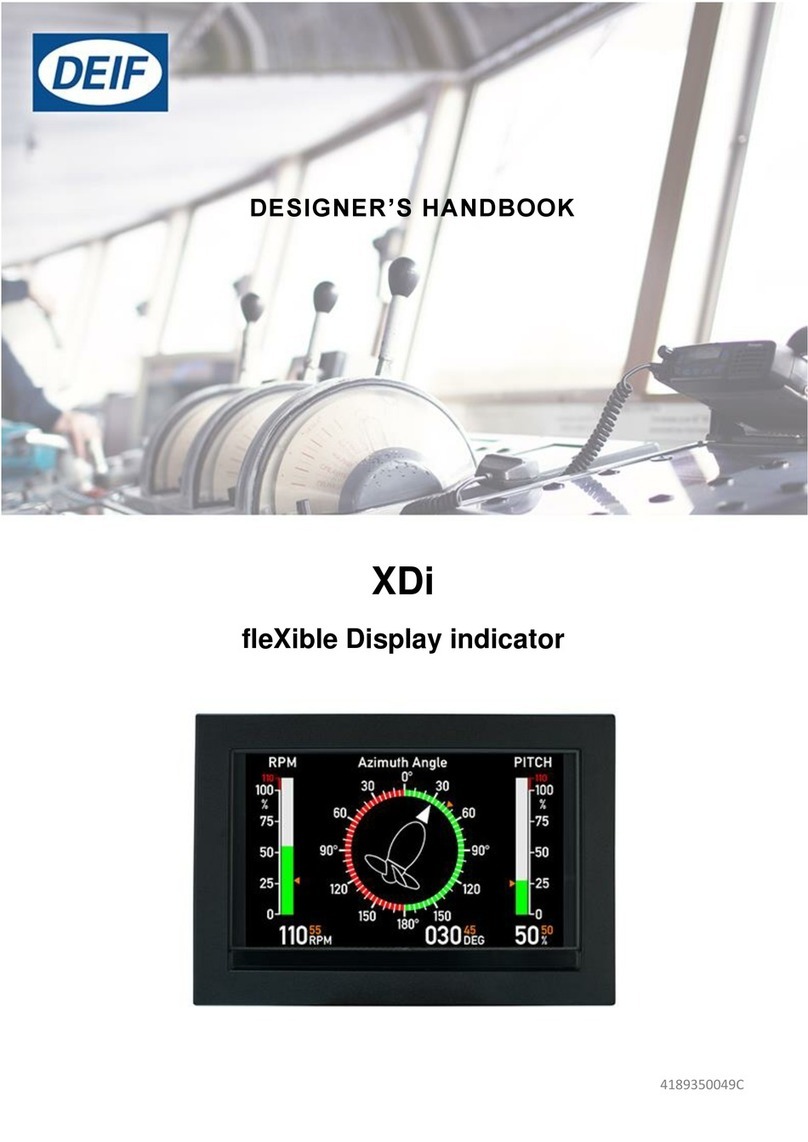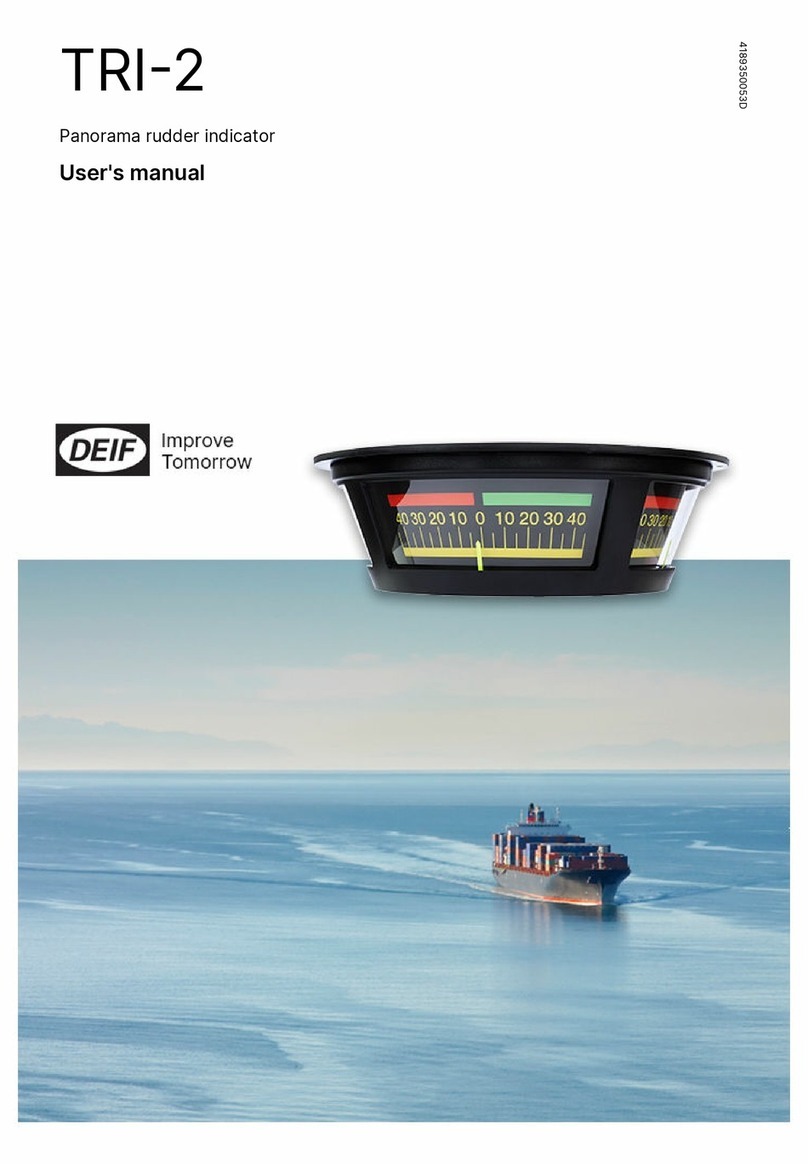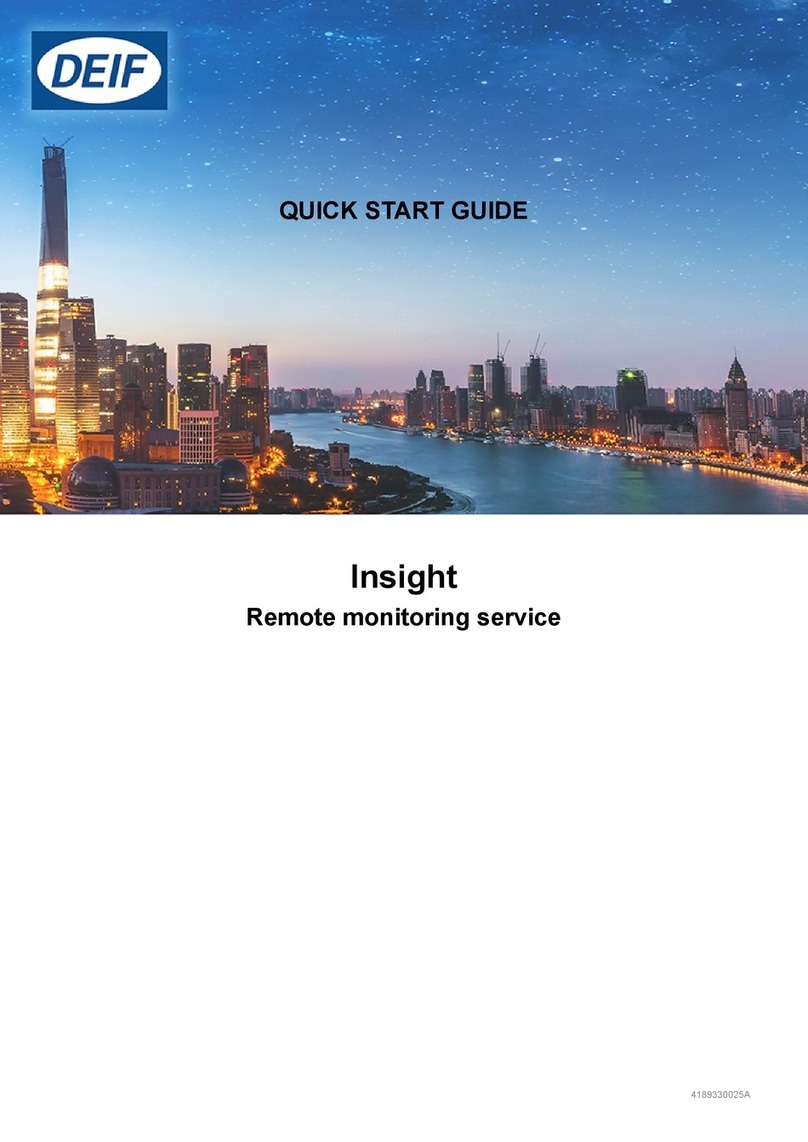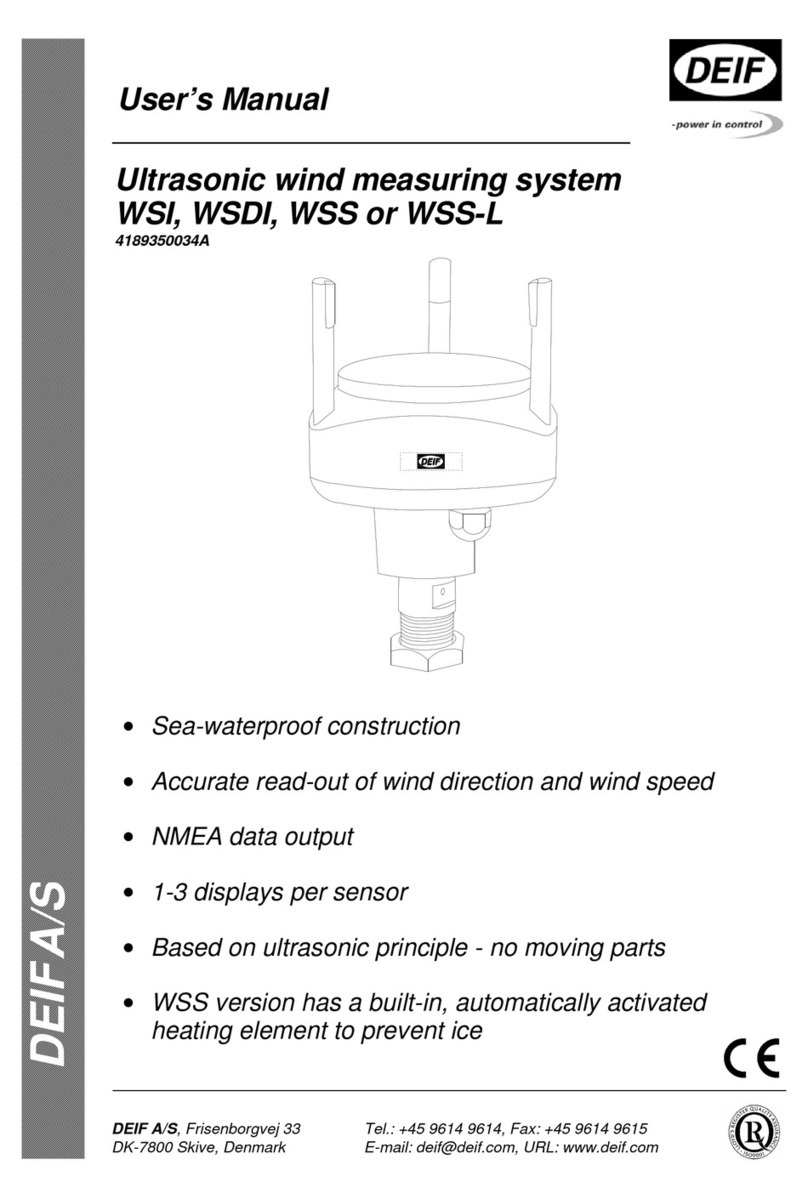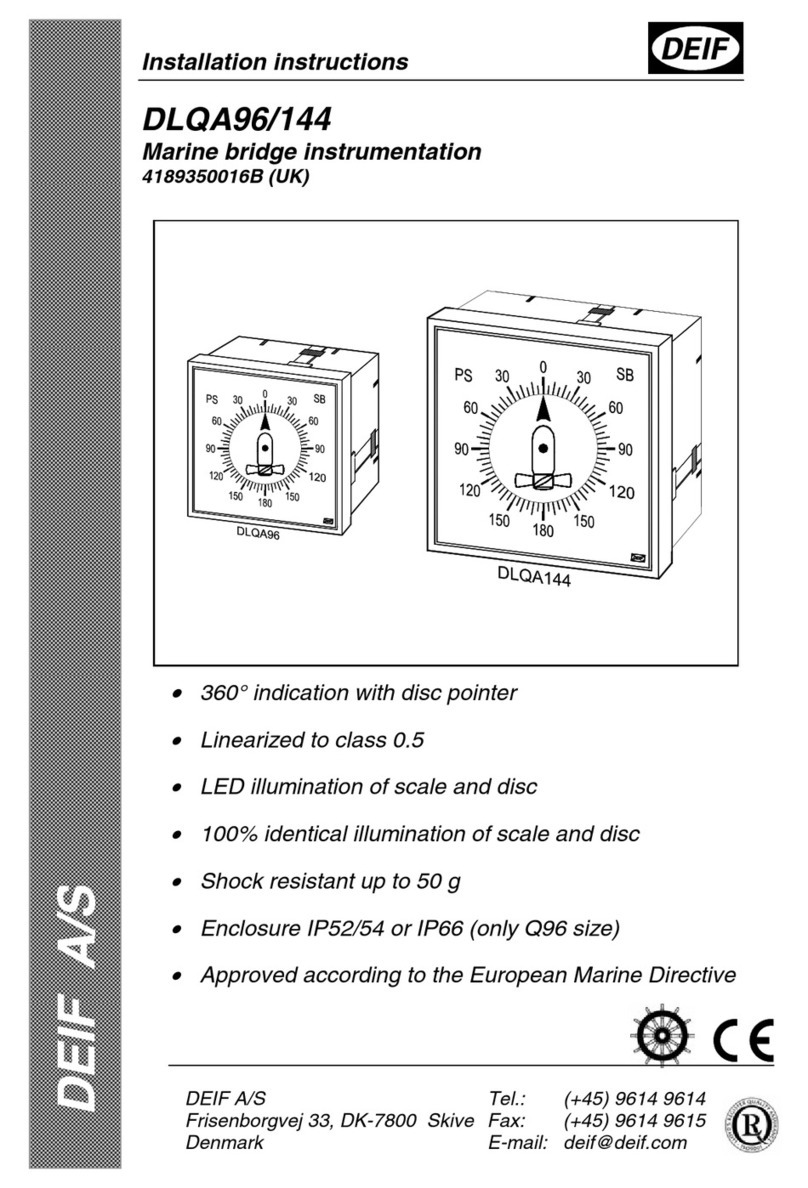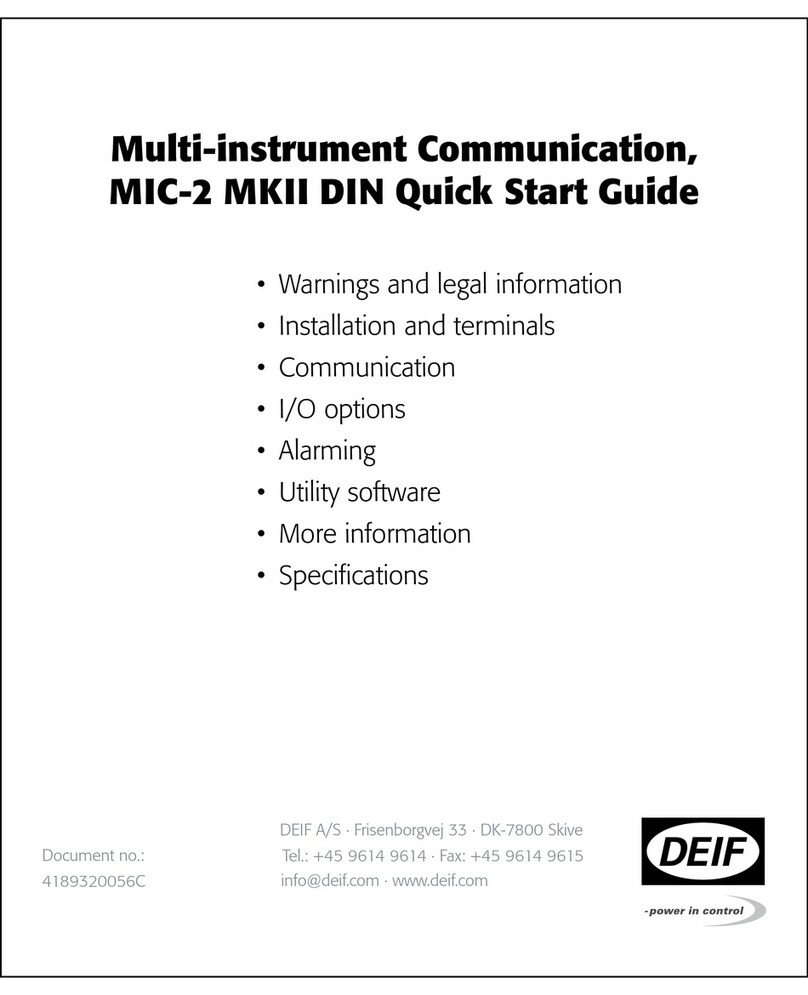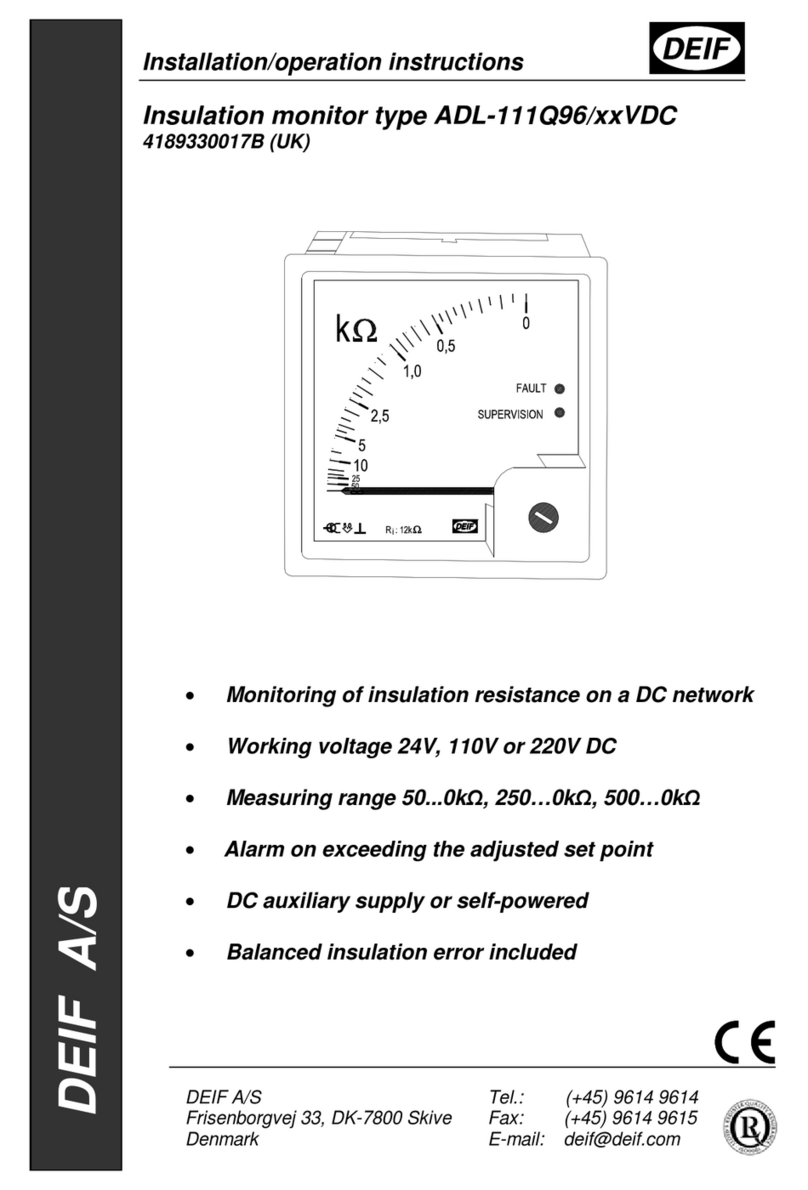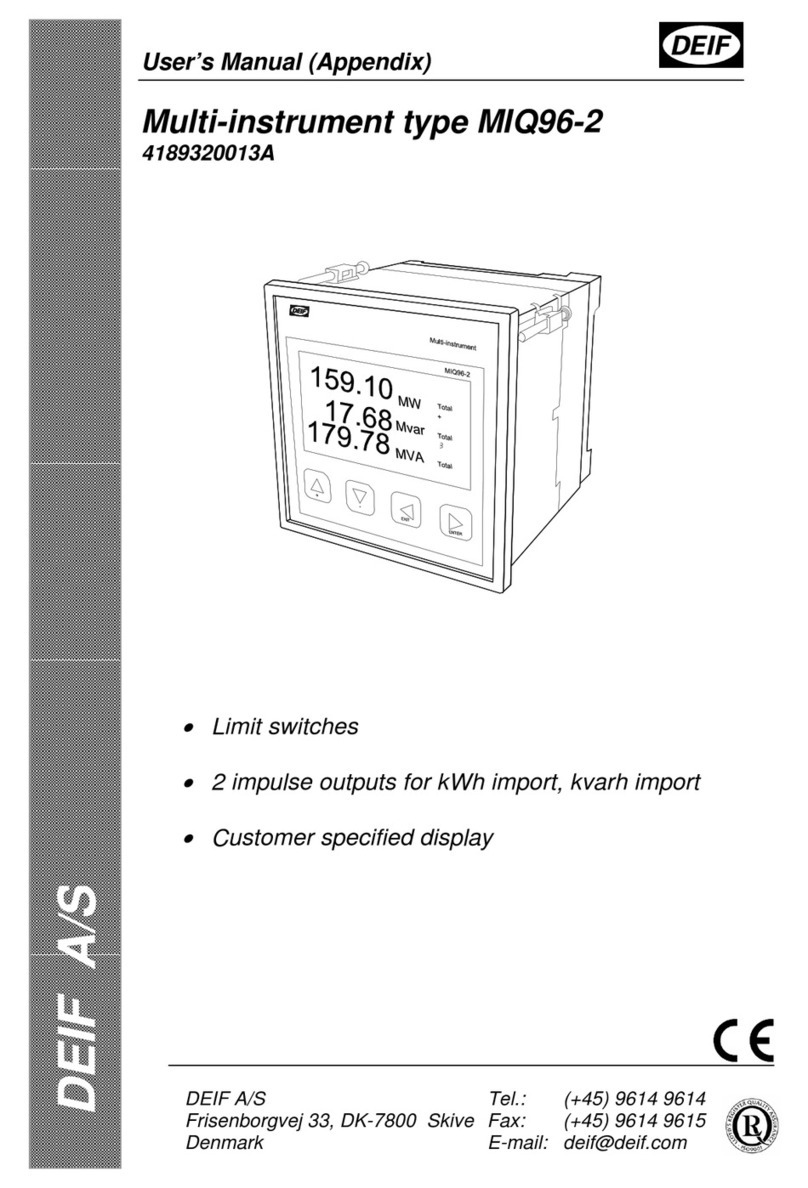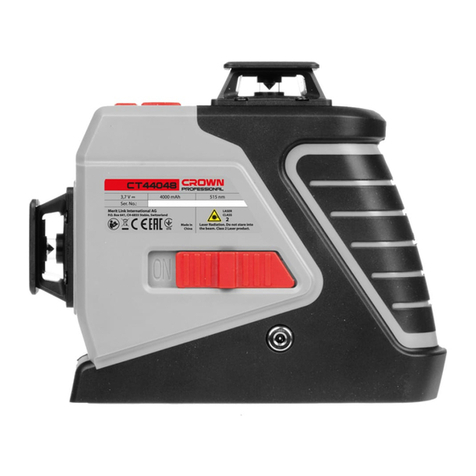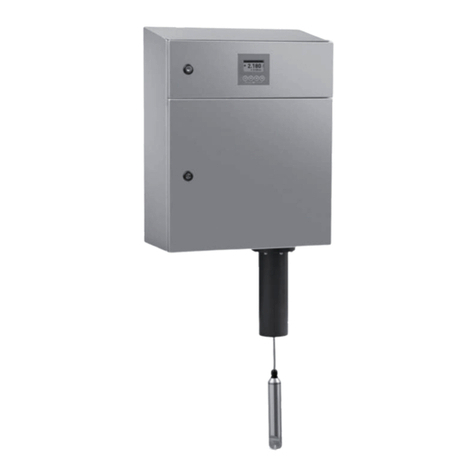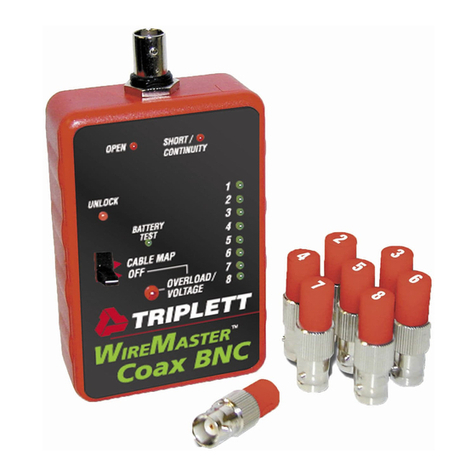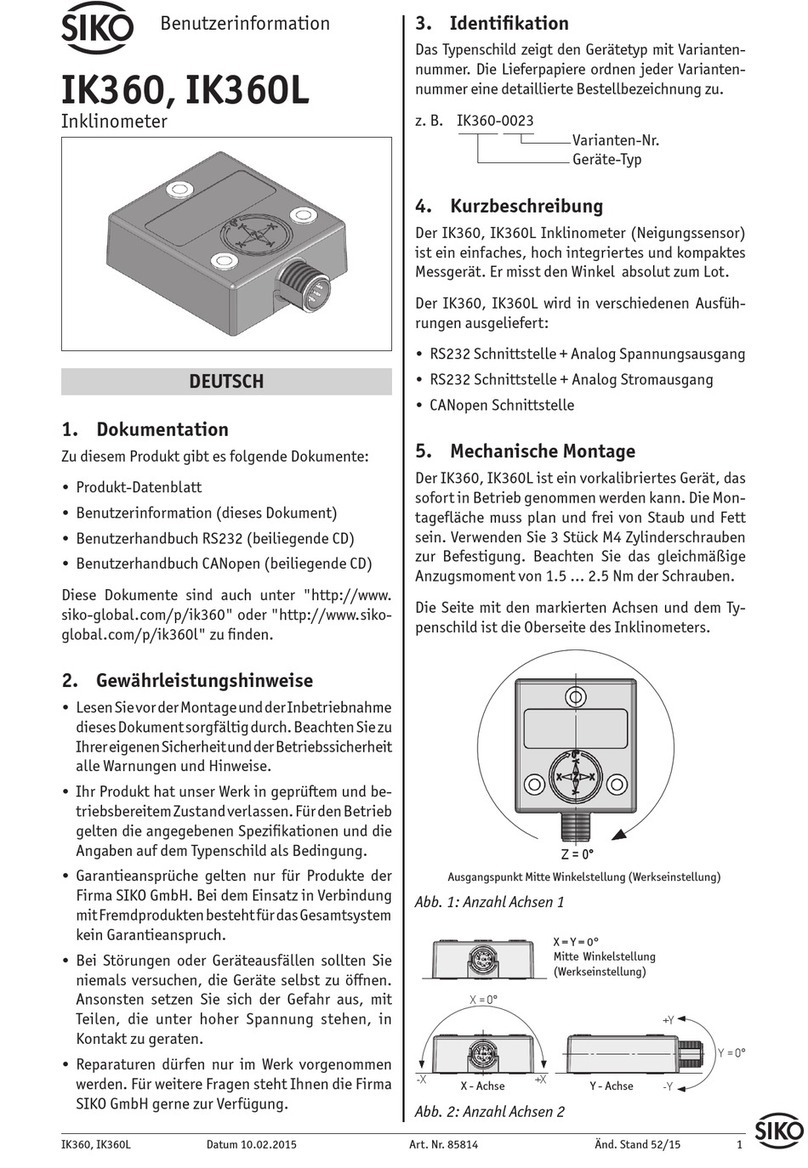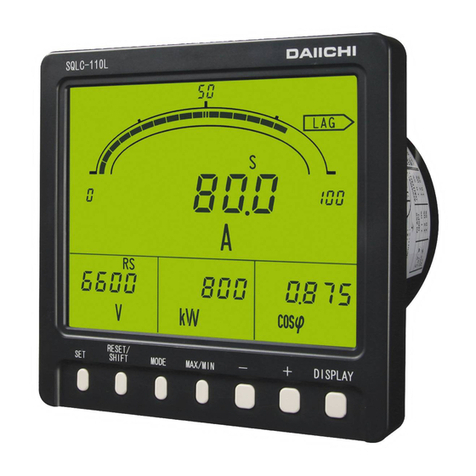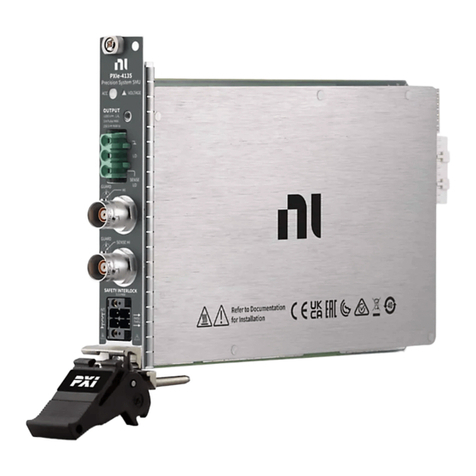Deif MIC-2 MKII Operating and maintenance instructions

Multi-instrument Communication,
MIC-2 MKII Quick Start Guide
• Warnings and legal information
• Installation and terminals
• Display description
• Operation
• Settings
• Communication
• I/O options
• Alarming
• Utility software
• More information
• Specifications
DEIF A/S · Frisenborgvej 33 · DK-7800 Skive · Tel.: +45 9614 9614 · Fax: +45 9614 9615 · info@deif.com · www.deif.com
DEIF A/S · Frisenborgvej 33 · DK-7800 Skive · Tel.: +45 9614 9614 · Fax: +45 9614 9615 · info@deif.com · www.deif.com
DEIF A/S · Frisenborgvej 33 · DK-7800 Skive · Tel.: +45 9614 9614 · Fax: +45 9614 9615 · info@deif.com · www.deif.com
Document no.:
4189320028D

2
General information
Warnings, legal information and safety
Legal information and disclaimer
DEIF takes no responsibility for installation or operation
of the multi-instument. If there is any doubt about how
to install or operate the multi-instrument, the company
responsible for the installation or the operation of the
set must be contacted.
The DEIF unit is not to be opened by unauthorised
personnel. If opened anyway, the warranty will be lost.
Disclaimer
DEIF A/S reserves the right to change any of the
contents of this document without prior notice.
The English version of this document always contains
the most recent and up-to-date information about
the product. DEIF does not take responsibility for the
accuracy of translations, and translations might not be
updated at the same time as the English document. If
there is any discrepancy, the English version prevails.
Safety issues
Installing and operating the DEIF unit may imply work
with dangerous currents and voltages. Therefore, the
installation should only be carried out by authorised
personnel who understand the risks involved in working
with live electrical equipment.
Be aware of the hazardous live currents and voltages.
Do not touch any AC measurement in- puts as this
could lead to injury or death.
Electrostatic discharge awareness
Sufficient care must be taken to protect the terminal
against static discharges during the installation. Once
the unit is installed and connected, these precautions
are no longer necessary.
Factory settings
The DEIF unit is delivered from factory with certain
factory settings. These are based on average values and
are not necessarily the correct settings for matching the
engine/generator set in question. Precautions must be
taken to check the settings before running the engine/
generator set.
About the quick start guide
General purpose
This quick start guide mainly includes general
product information, mounting instructions and wiring
descriptions.
The general purpose of this document is to help the
user with the first steps of installing and using the
DEIF system.
Please make sure that you also read the installation
instructions before starting to work with the DEIF unit
and the genset to be controlled. Failure to do this could
result in human injury or damage to the equipment.
Intended users
This quick start guide is mainly intended for the panel
builder in charge. On the basis of this document, the
panel builder designer will give the electrician the
information he needs in order to get started with the
installation. For detailed electrical drawings, please see
the installation instructions.
Contents and overall structure
This document is divided into chapters, and in order
to make the structure simple and easy to use, each
chapter will begin from the top of a new page.
According to the instrument model, the current input
type is for 1/5 A CTs or Flexible Current Transformer.
Check the instrument model and connect the voltage
and current inputs according to the following wiring
diagrams.

3
Installation and terminals
Installation
Make sure the unit is installed in a dry and dust free environment. Avoid placing
it near to heat, radiation and strong electrical interference sources. The working
temperature range of the unit is from -25°C to 70°C.
The unit can be installed into an IEC 92 mm DIN (square) or an ANSI C39.1
(4’’ round) form.
Terminals
Ground terminal connection
Ground can be connected to ground on a grounded system (star point
on the generator is connected to ground). On an IT system, terminal 13
must be left open, otherwise a false insulation error will occur.
78910
V1 V2 V3 VN
I11 I12 I21 I22 I31 I32
123456
11 12 13
L/+ N/-
Comm Port
ABS
14 15 16
Voltage input Current input
Power supply Communication

4
Display
9
11
12
13 14 15 16
17
1
4
5
6
7
8
2
3
10

5
Display description
No. Display description
1 Mode indication, shows different modes on the display
2 Displays metering data
3 Displays energy data and real-time clock
4 Item label, U: voltage; I: current; P: active power, etc.
5 Item icon, Unbalance, THD, TDD, MAX, MIN
6 Display the percentage of the load current to the nominal current.
7 Four quadrant energy icon and icon for inductive or capacitive load
8 Display the three phases and N
9 Energy icon: Imp, Total, Net, Exp
10 Indicates data unit
11 Communication icon, indicates data communication
12 Energy pulse output indicator
13 Indicates the mounted I/O modules
14 Profibus module indicator
15 Ethernet module indicator
16 No function
17 Time icon

6
Operation
Mode selection
Press and simultaneously to enter the mode selection screen.
Press or to change the mode (Meter – Max/Min – Demand – Harmonic
– Setting – Digital I/O). Enter the mode by pressing . Exit mode selection by
pressing and simultaneously.
Metering data mode (Meter)
Voltage and current Phase angles and unbalance
Energy Power, power factor and frequency
Statistics data mode (Max/Min)
Change between Max and Min mode
and Change view
Demand data mode (Demand)
and Change between power and current demand
Harmonic data mode (Harmonic)
Power quality data
Switch to harmonic ratio data
Display power quality data
Harmonic ratio data
Switch between voltage harmonics and current harmonics
and Change harmonic order
Switch to power quality data
H P E V/A
>Enter
>
>
H P
E
V/A
>Enter
>
>
H P E V/A
>Enter
>
>
H P E V/A
>
Enter
>
>
H P E V/A
>
Enter
>
>
H P E V/A
>Enter
>
>
H P E V/A
>
Enter
>
>
H P E V/A
>Enter
>
>
H P E V/A
>Enter
>
>
H P E V/A
>Enter
>
>
H P E V/A
>Enter
>
>
H P E V/A
>Enter
>
>
H P E V/A
>
Enter
>
>
H P E V/A
>Enter
>
>
H P E V/A
>Enter
>
>
H P E V/A
>
Enter
>
>
H P E V/A
>
Enter
>
>
H P E V/A
>
Enter
>
>
H P E V/A
>
Enter
>
>
H P E V/A
>Enter
>
>
H P E
V/A
>Enter
>
>
H P E
V/A
>Enter
>
>
H P E V/A
>Enter
>
>

7
Settings
Enter the setting mode in the mode selection screen.
Before accessing the parameter setting mode, a four digit password is required. The
default password is 0000. Insert the correct password and press .
4 options are available in the parameter selection
page:
• “SYS” for system parameter
• “I/O” for I/O module parameter
• “NET” for Ethernet module parameter
• “ALM” for alarm parameter.
Press or to move the cursor up or down.
Press to enter the selected parameter settings page.
Wiring, PT and CT settings
Enter “SYS” to change the following parameters:
• S04 for voltage wiring • S07 for secondary side PT ratio
• S05 for current wiring • S08 for primary side CT ratio
• S06 for primary side PT ratio • S09 for secondary side CT ratio.
For PT and CT ratio settings, press or to increase or decrease digit, press
to move the cursor to the next digit, press to accept your change. Exit from
“SYS” page, press .
H P E V/A
>Enter
>
>
H P E V/A
>Enter
>
>
H P E V/A
>
Enter
>
>
H P
E
V/A
>Enter
>
>
H
P
E V/A
>Enter
>
>
H P E V/A
>
Enter
>
>
H P E V/A
>Enter
>
>
H P E V/A
>Enter
>
>
H P E V/A
>
Enter
>
>

8
Communication
The unit has a standard RS485 communication port and optional Ethernet or
Profibus communication modules. The unit supports dual communication which
means the RS485 serial communication can be used together with either an
Ethernet or a Profibus connection.
Modbus communication settings
The communication terminals are A, B, S (14, 15, 16). A is the differential signal +, B
is the differential signal –, and S is the shield. Up to 32 devices can be connected on
an RS485 Modbus. The overall length of the Modbus cable cannot exceed 1000 m.
The communication terminals are A, B, S (14, 15, 16). A is the differential signal +, B
is the differential signal –, and S is the shield. Up to 32 devices can be connected on
an RS485 Modbus. The overall length of the Modbus cable cannot exceed 1000 m.
Enter “SYS” page and scroll to page S01 to set the device address and S02 to change
baud rate. Default settings are: Device address: 1 Baud rate: 19200 bps. Enter “SYS”
page and scroll to page S01 to set the device address.
Ethernet communication settings (optional)
AXM-Net default settings are:
• IP Address (192.168.1.254) • Subnet Mask (255.255.255.0)
• Gateway (192.168.1.1) • Primary DNS Server (202.106.0.20).
Change the settings in the setting mode and enter the “NET” page.
Exit “NET” page by pressing .
To enter the settings webpage, the default password is: 12345678
Profibus communication settings (optional)
AXM-PROFI default settings are:
• Device address 0
Profibus parameters can be set or viewed either from the unit front or through
communication using utility software. Please refer to the Profibus module user’s
manual chapter 3 “Application of Profibus DP Protocol”for operation details.
H
P E V/A
>
Enter
>
>

9
I/O module (option)
Digital input (DI)
An external power supply (16~30 V DC – max load 2 mA) is required for the
digital inputs. DI can be used as a pulse counter to monitor switch status or to
monitor event sequences.
Digital output (DO)
Two modes available: alarm output and energy pulse output. One module can only
support one mode at a time. In alarming mode, conditions can be set using the
utility software. In energy pulse mode, output parameters can be set from the unit
front or from the utility software (voltage 20~160 V AC/DC, max. load 100 mA).
Relay output (RO)
Two modes available: control (latch or pulse) and alarm output (latch only).
One module can only support one mode at a time. In control mode, relays can be
switched on and off from the utility software. In alarming mode, conditions can be
set using the utility software (max voltage 250 V AC/30 V DC, load 3 A).
Analogue input (AI)
Each module supports 4-20 mA or 0-20 mA current input. Tracking object and
upper/lower limit can be set from the front panel control keys or from the utility
software.
Analogue output (AO)
Each module supports 4-20 mA or 0-20 mA current output. Settings can be set
from the front panel control keys or from the utility software.
Power supply for DI
24 V isolated power supply is used as an auxiliary power supply for digital inputs.
Output current 42 mA load, Max 21 X Digital Input (DI).

10
I/O module (option)
Three types of I/O modules with different I/O combinations are available:
AXM-IO1:
6 × DI, 2RO,
1 Power Supply
for DI
AXM-IO2:
4 × DI, 2× AO,
2×DO
AXM-IO3:
4 × DI, 2 × RO,
2×AI
Note: A maximum of 1 communication and 2 input/output modules can be used
for each unit.
I/O parameters can be set or viewed either from the unit front or through
communication using utility software. Please refer to the I/O modules user’s
manual chapter 3 for operation details.
AXM-IO2 has two analogue outputs. Please notice that functionality is limited
compared to traditional transducers. For more information, please read the I/O
modules user’s manual chapter 3.
Digital Input Relay Output VDC
DI1DI2 DI3DI4 DI5DI6 DICRO1 RO2ROC V+ V-
Digital Input Analog Output Digital Output
DI1DI2 DI3DI4 DICAO1+ AO1- AO2+ AO2- DO1 DO2 DOC
Digital Input Relay Output Analog Input
DI1DI2 DI3DI4 DICRO1 RO2ROC AI1+ AI1- AI2+ AI2-

11
Alarming
Up to 16 alarming channels can be selected from 48 available parameters.
Alarming channels and conditions can be set from the utility software.
Please refer to MIC-2 MKII user’s manual section 4.4 for details.
Utility software
The free utility software DEIF View is a user-friendly real time monitoring and data
logging for energy saving and power quality analysis. This software is intended
for users to monitor multiple parameters continuously. It allows for real-time
monitoring and maintenance.
Download DEIF View: www.deif.com/software/software-download
More information
The following can be downloaded from www.deif.com:
• MIC-2 MKII user manual
• Ethernet TCP/IP - AXM-Net manual
• AXM-Profibus – AXM-PROFI manual
• I/O modules - AXM manual
• MIC-2 MKII utility software
• GSD file for Profibus

Specifications
Voltage inputs
Nominal voltage UN L-N 400 V AC, L-L 690 V AC
Overload capacity 1500 V continuous, 3250 V for 1min
Nominal frequency and range 50/60 Hz, 45 Hz to 65 Hz
Current inputs
Nominal current 5 A
Overload capacity 10 A continuously, 100 A for 1 s
FCT inputs
Nominal voltage 100 mV
Frequency
Nominal frequency 50/60 Hz,
Frequency range 45 Hz to 65 Hz
Accuracy
U, I and F Class 0.2
Harmonic U, I Class 5
DEIF reserves the right to change any of the above.

Specifications
Auxiliary power supply
AC 100 to 415 V AC +/-10 % 50/60 Hz
DC 100 to 300 V DC +/-10 %
Consumption ≤5 VA
DEIF reserves the right to change any of the above.
Other manuals for MIC-2 MKII
1
Table of contents
Other Deif Measuring Instrument manuals
Popular Measuring Instrument manuals by other brands

Anritsu
Anritsu Microwave Site Master S820E Maintenance manual

UNITED PRODUCTS & INSTRUMENTS INC.
UNITED PRODUCTS & INSTRUMENTS INC. UNICO 1100 Service manual

Adeunis RF
Adeunis RF PULSE V3 Technical reference manual
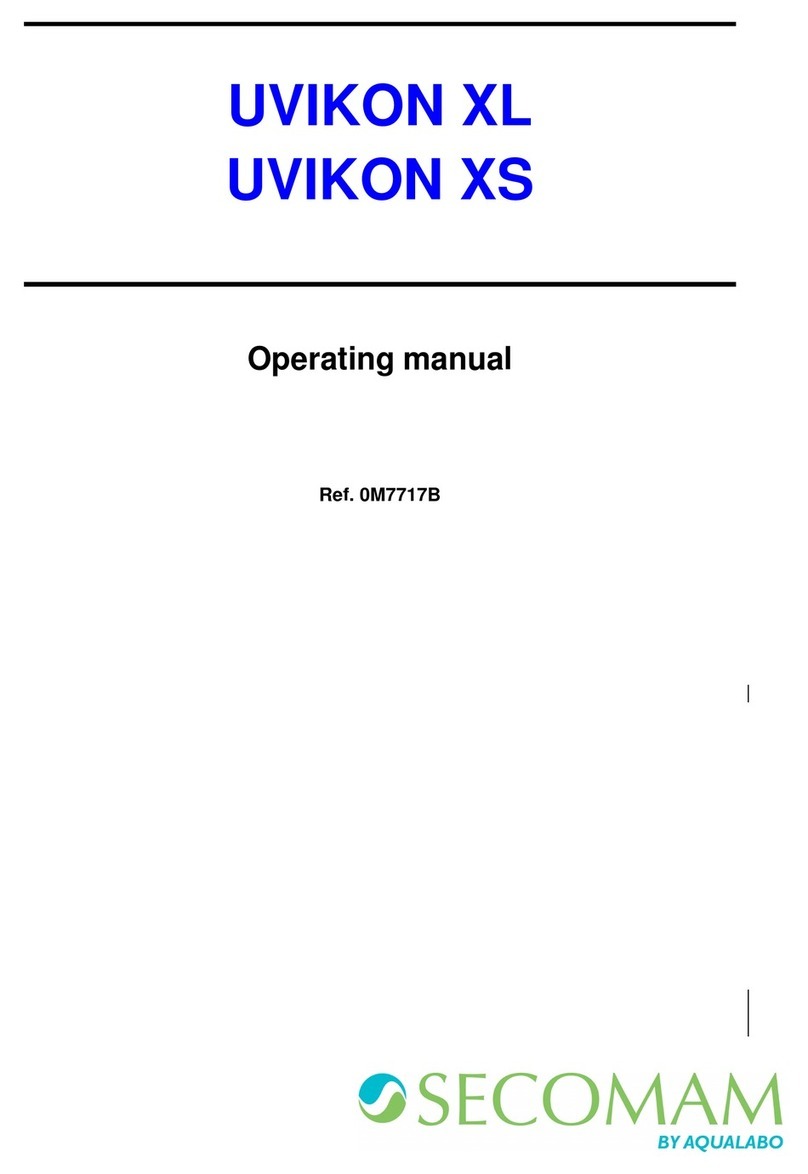
Secomam
Secomam UVIKON XL operating manual
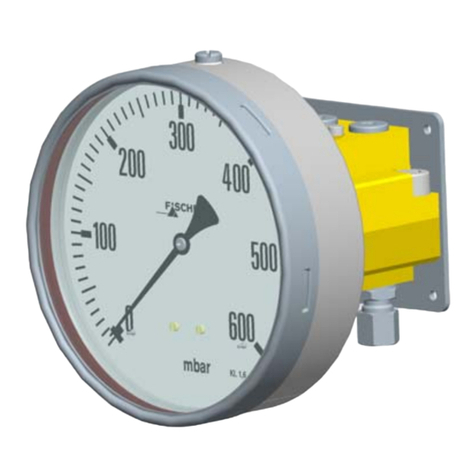
FISCHER
FISCHER DA30 instruction manual

IFM Electronic
IFM Electronic efector300 SD6000 operating instructions

KROHNE
KROHNE VFM 1091 I Installation and operating instructions
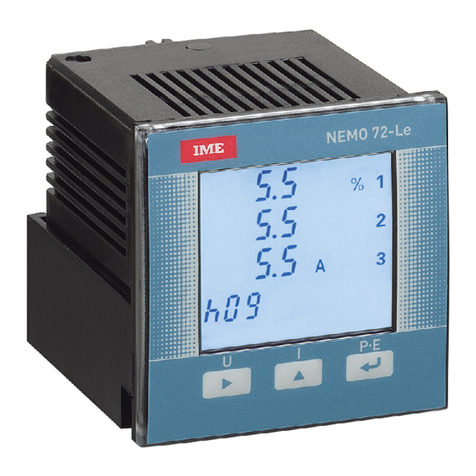
IME
IME Nemo 72 Le manual
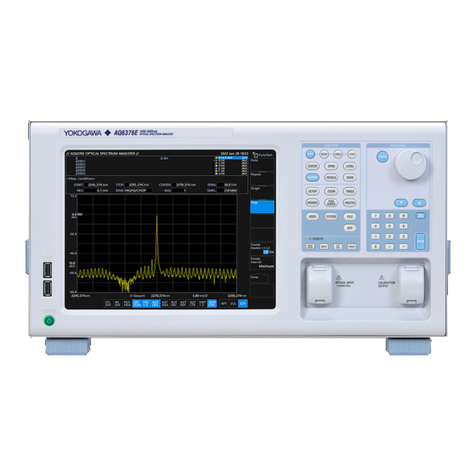
YOKOGAWA
YOKOGAWA AQ6376E Getting started guide
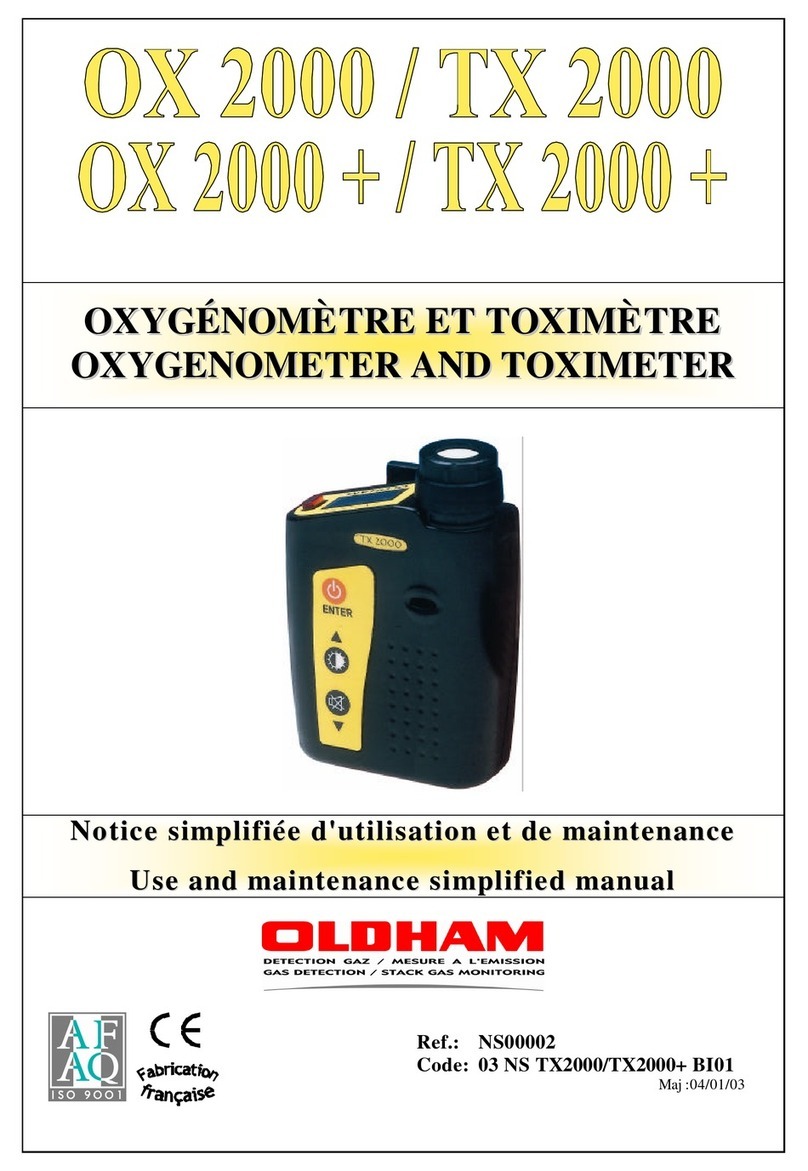
Oldham
Oldham OX 2000 Use and Maintenance Simplified Manual

Endress+Hauser
Endress+Hauser StamoLys CA 71 CR operating instructions

H2flow
H2flow FaraMag FM750 operating manual
